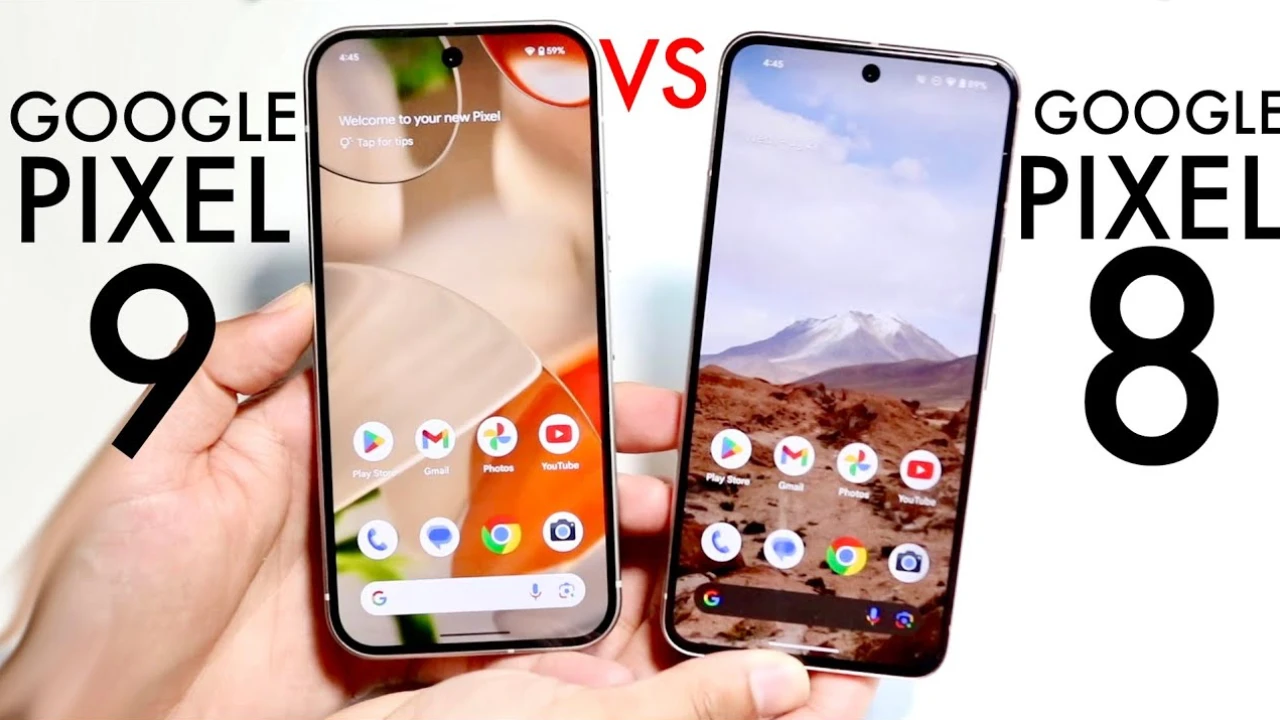When comparing the Google Pixel 9 and Google Pixel 8, several key differences emerge in terms of design, display, performance, camera features, and overall user experience. While both smartphones have their strengths and appeal to different user preferences, the Pixel 9 introduces some notable advancements and improvements over its predecessor. However, the Pixel 8 remains a compelling choice, particularly for those who prioritize a compact design and ease of use, the video below from Simple Alpaca compares the two handsets, side by side, lets find out more details.
Design and Build: Contrasting Approaches
The Google Pixel 8 stands out with its smaller and more compact design, making it easier to hold and operate with one hand. Its unique design language sets it apart from other smartphones on the market, offering a refreshing and distinctive look. On the other hand, the Google Pixel 9 adopts a larger and thicker build, reminiscent of the design aesthetics found in recent iPhone models. This shift in design philosophy may resonate with users who prefer a more substantial and robust feel in their hands.
Display: Enhanced Brightness and Immersion
Both the Pixel 8 and Pixel 9 feature impressive displays that deliver stunning visuals and smooth scrolling experiences. The Pixel 8 is equipped with a 6.2-inch OLED display that features a 120Hz refresh rate and a peak brightness of 2000 nits. The Pixel 9 takes display technology a step further with its 6.3-inch OLED panel, maintaining the same 120Hz refresh rate but pushing the brightness to an impressive 2700 nits. This enhancement results in a more vibrant and immersive viewing experience, making the Pixel 9’s display easier to view even in bright outdoor conditions.
Performance: Faster and Smoother
Performance is an area where the Pixel 9 showcases significant improvements over its predecessor. While the Pixel 8 is powered by the capable Tensor G3 chipset and comes with 8GB of RAM, the Pixel 9 takes performance to the next level with the newer Tensor G4 chipset and an increased 12GB of RAM. These upgrades translate to:
- Faster app loading times
- Smoother multitasking
- Enhanced overall responsiveness
The Pixel 9’s performance enhancements contribute to a more fluid and seamless user experience, making it a compelling choice for power users and those who demand the best performance from their smartphones.
Camera: Capturing Life’s Moments
Both the Pixel 8 and Pixel 9 are renowned for their exceptional camera capabilities, thanks to their advanced dual camera setups. However, the Pixel 9 takes photography to new heights with its 48MP ultrawide camera, surpassing the 12MP ultrawide camera found on the Pixel 8. This higher megapixel count allows for more detailed and expansive shots, particularly in landscape and group photography scenarios. Both models support 4K 60fps video recording on both the front and back cameras, ensuring that you can capture life’s moments in stunning clarity and smoothness.
Battery Life and Charging: All-Day Reliability
When it comes to battery life and charging capabilities, both the Pixel 8 and Pixel 9 offer similar experiences. Both smartphones support wireless charging and reverse wireless charging, allowing you to conveniently charge your device or even share power with compatible accessories. In terms of battery life, both models are designed to provide all-day usage under typical conditions, ensuring that you can rely on your device throughout the day without constantly searching for a power outlet.
Software Updates and Longevity: Prolonged Support
One of the key advantages of owning a Google Pixel device is the promise of long-term software support. The Pixel 8 is expected to receive software updates for six more years, while the Pixel 9 is anticipated to receive updates for an impressive seven years. This extended support period ensures that your device remains secure, up-to-date, and equipped with the latest features and improvements. With such prolonged software support, you can confidently use your Pixel smartphone for years to come without worrying about obsolescence.
Making the Right Choice
Ultimately, the choice between the Google Pixel 8 and Pixel 9 depends on your specific needs and preferences. The Pixel 8 remains a strong contender, especially for those who prioritize a compact and unique design along with ease of use. It offers sufficient performance and features for most users. On the other hand, the Pixel 9 introduces incremental improvements in display brightness, performance, and camera capabilities. While these enhancements may not warrant an immediate upgrade from the Pixel 8, they can be compelling for those seeking the latest and greatest features. If you’re considering a more significant upgrade and want the absolute best that Google has to offer, it might be worth exploring the Pixel 9 Pro. This higher-end variant builds upon the strengths of the Pixel 9 while introducing additional premium features and capabilities. Regardless of your choice, both the Google Pixel 8 and Pixel 9 deliver exceptional user experiences, innovative technology, and the promise of long-term software support. By carefully considering your priorities and preferences, you can make an informed decision and select the smartphone that best aligns with your needs.
Source & Image Credit: Simple Alpaca
Filed Under: Android News, Mobile Phone News, Top News
Latest TechMehow Deals
Disclosure: Some of our articles include affiliate links. If you buy something through one of these links, TechMehow may earn an affiliate commission. Learn about our Disclosure Policy.
